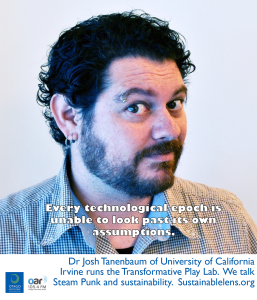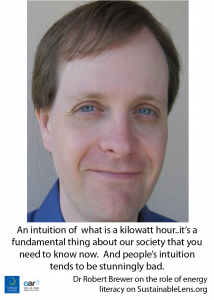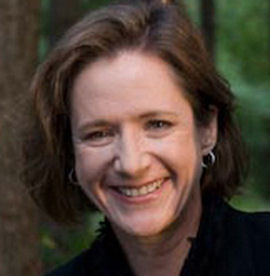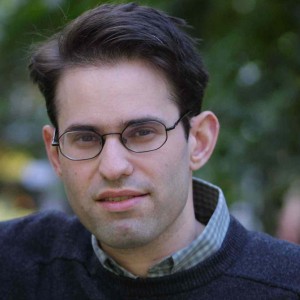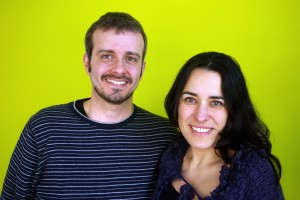How to use narratives as a way of exploring possible futures – both desired futures and frightening futures.
Dr Josh Tanenbaum Assistant Professor at UC Irvine. He runs the transformative play lab, focussing on the experiences of traditionally marginalised. We also talk narrative games and ask what can we learn from steam punk?
Talking points
Designing for character transformation in games
How do you design a game that gives people an understanding of what the experience of being transgendered? Or the experience of living below the poverty line? Or the experience of being racially marginalised. Without stereotyping or appropriating. It combines participatory design, designing within these communities.
How to produce empathy?
Games that are successful in transformation are not that those tat providing with knowledge – what games do really well is provide experiences.
“Tomorrow as it used to be” provides a retrofuture lens, that has values for sustainability, it does a really good job of re-appropriating technology.
Steam Punk struggles a lot with the fact that the era that it draws its aesthetic inspiration from is really politically problematic -it was the colonialist time, women were treated terribly, ethic minorities were treated terribly – it was not an era of equality by any imagination. But the retrofuturistic lens provides a means to critique those aspects.
The closest analogue is the Arts and Crafts movement, and if you look at Ruskin you can see that it was a reaction against industrialisation, against mass production, against mass labour, it was a return to handicraft, a return to individual practice, the Arts and Crafts returned to the ornamentation of baroque and Gothic, and steam punk returns to the ornamentation of the Arts and crafts perion in a fantastic bit of historical cannibalism.
You see the same ethos in the Steam Punk making where you see people say I don’t want my mobile phone to look like everyone else’s I want it to reflect something about myself. People are rejecting at the cheap plastic things that result from industrialisation – these material outcomes of mass industrialisation are no longer satisfactory or acceptable.
Steam punk is characterised by a sense of optimism. This can be problematic if people whitewash and sugar-coat the past. There are post-colonial and indigenous steam punk researchers that doing very interesting work.
Unknowable what is the right thing to do.
Right now we are living with the consequences of choices just being made in the Victorian era, the outcome of 150 years of “isn’t this amazing we have all this power now!” but not realising the consequences of the power that industrialisation gave us. Its more nuanced than simply saying let’s learn from the mistakes of the past.
Every technological epoch is unable to look past its own assumptions.
Previously inconceivable resource consumption.
Modernism believed that there was a knowable truth in the universe that if you designed things according to the principles of modernism, that you would produce something that was empirically and objectively good, and good for all people. But in the process it spackled over and covered over a bunch of historical beauty – it tried to reshape into the vision that it had, of this attainable perfection. And then the post-modern realisation that we were only designing one vision of perfection, and that this vision didn’t serve the majority of humans in the world. We’re still grappling with that.
We have an infinite diversity on this planet with an infinite set of optimum needs, how do we reconcile that with a system that’s been designed to produce material goods and industry… in a way that tends to be very homogenising.
Games allow consequence free exploration of alternatives.
(How can games go beyond resource use?) What explores spatial impacts? Minecraft. Experiments where resource areas are limited, quickly result in decimation of the game landscape. But in games there’s very little promotion of living harmoniously, as soon as you take away the resource frontier, most game environments fail.
There has been a successful pacifist WoW player – but he was so unusual he made the news.
Journey is based on helpful interactions, cooperation and a sense of connectedness to other people and the world around you.
We have sunk ourselves into spatially biased communication. And sustainability asks us to move more to the temproal bias (see Harold Innes – bias of communication).
Games to experience loss of agency – it’s easy to judge someone of not properly exercising agency when you have lots of it.
Situations where you are given only bad choices
(Success in last couple of years?) Captain Chronomek
(Activist?) More and more so. Activist is a title like “artist” in that you are one if you say so. Meaningfully express changes I want to see in the world.
(Motivation?) Doing more things I love. For a long time that was enough, but now we’ve got a kid on the way, that’s changed a lot of my motivation, it’s changed a lot of how I think about the future. Its very easy when presented with the realities of our current situation, our environment, to give in to despair, but the current situation is the result of people giving into the easy choice. So giving in to despair as the easy choice is not the right choice. If I can do work that in some way participates in the conversation that leaves a little bit more of the world for my daughter, then I guess its worth it.
(Challenges?) Articulate work in a way that attracts funding.
(Miracle? or smallest thing that would make the biggest impact?) Tell a story that could actually stir people to reexamine deeply held partisan biases, tell a story that would really stop and question.
(Advice for listeners?) Take ownership of what you what want to do in the world – its not enough to wait for other people to do it for you. You have to determine what your goals and values are, and work your ass off to acheive them. If enough of us do that, we’ll find the world that we want.
This Sustainable Lens is from a series of conversations at University California Irvine. Sam’s visit was supported by the Newkirk Center for Science and Society, and coincided with Limits 2015.
